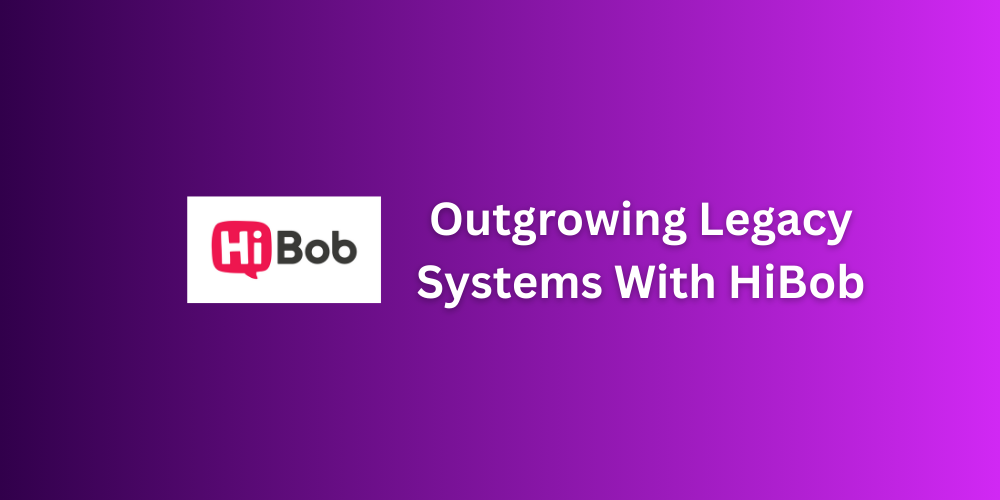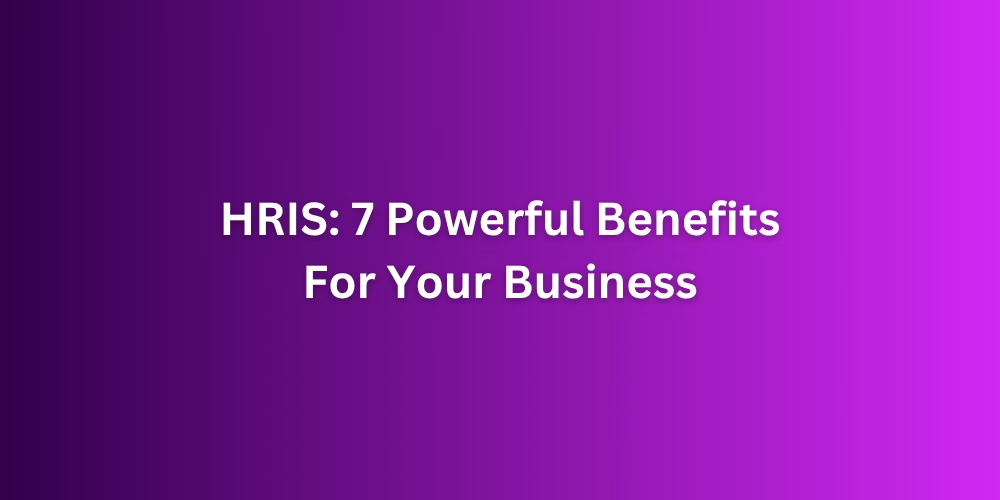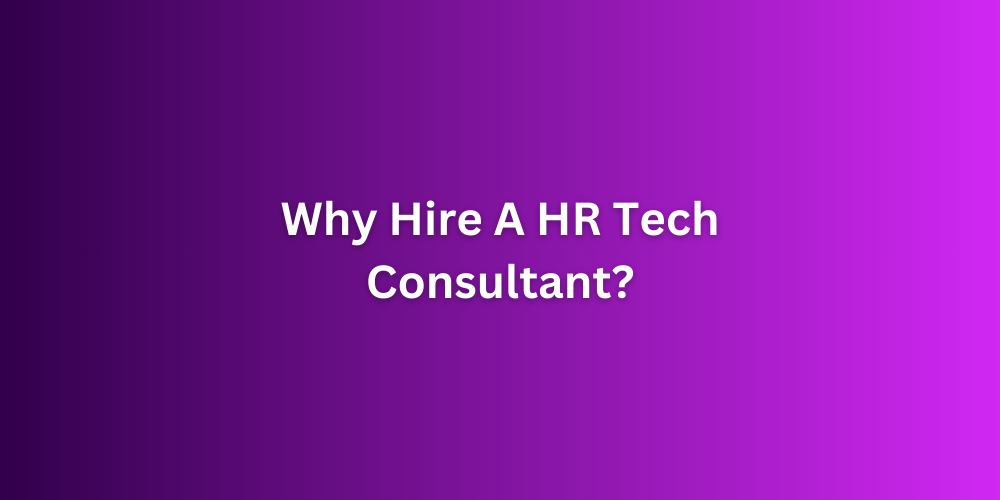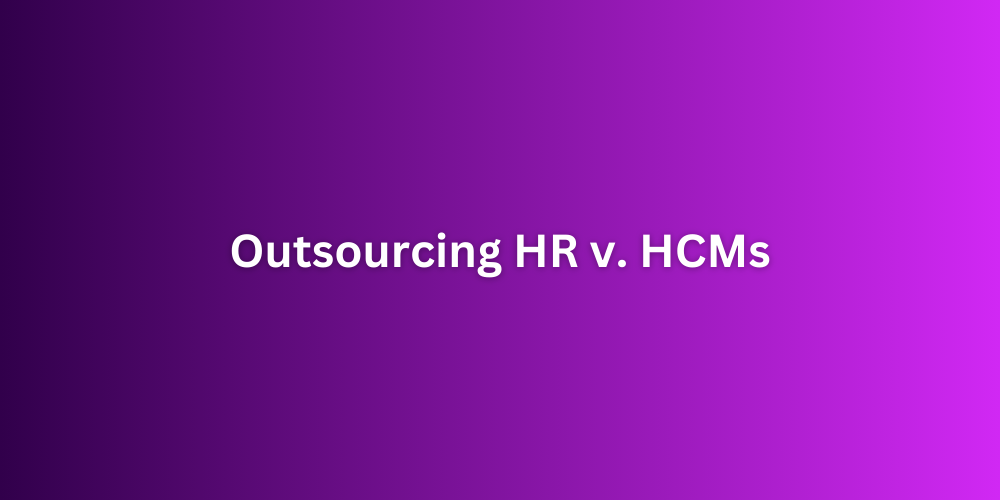In today’s fast-paced business landscape, your HR tech stack needs to be reliable, adaptable, and ready to scale. For many Australian organisations, a big question looms: Is it time to ditch your dated legacy system and invest in a modern HCM platform like HiBob to streamline your HR operations?
Or would selecting targeted point solutions to fill specific gaps better match your growing needs? This blog unpacks the pros, cons, and real-world impacts of Human Capital Management solutions versus legacy systems and point solutions to guide you toward the best fit for your team.

Legacy Systems, Point Solutions and HCM Systems
Let’s get straight to it. Modern HR professionals, particularly in small and medium-sized enterprises (SMEs), wear countless hats—recruiting talent, boosting engagement, and everything in between. Fortunately, a range of HR tech tools can lighten the load, no matter your organisation’s size.
These tools fall into four key categories:
- Spreadsheets: Tried and true for basic data tracking, but clunky and error-prone for complex tasks like payroll or performance reviews.
- Legacy Systems: Outdated platforms that limp along, struggling to meet modern demands and lacking scalability.
- Point Solutions: Focused tools that excel at specific HR tasks, such as payroll, benefits administration, or employee engagement.
- HCM Suites: All-in-one HCM systems that streamline workflows, centralise data, and simplify the employee lifecycle, often integrating seamlessly with point solutions.
The best HCM software doesn’t just connect the dots—it grows with you and powers your business. With modular designs, these solutions adapt to evolving challenges, ensuring your HR tech keeps up as your business soars.
HCM Systems: The Pros and Cons
Why HCM Software Excels
Think of modern HCM software as your HR team’s all-in-one toolkit. Its standout strength? A single source of truth for all your people data. Rather than juggling multiple tools, Human Capital Management solutions unify payroll, performance, and engagement in one platform.
Here’s what you gain:
- Deeper Insights: Analyse data from broad trends to fine details, empowering smarter, data-driven decisions.
- No Data Silos: Centralised information ensures consistency, quality, and easy access for HR and leadership alike.
- Streamlined & Automated Workflows: Integrated processes reduce errors and admin time, letting HR focus on strategy—like fostering a vibrant company culture.
For scaling businesses, HCM systems are a top pick. They allow you to start small with core features and add modules—like onboarding or talent management—as needs grow. A small business, for instance, might begin with basics and later expand to support a larger team, all while staying cost-effective.
Beyond HR: Benefits for All
HCM software isn’t just for HR—it’s a win for everyone. Employees enjoy self-service tools, accessing leave requests, performance reviews, or surveys via one login. Fewer passwords mean less frustration and higher engagement. That engagement generates richer data, helping HR, managers, and executives design better programs and strategies that put people first.
Plus, a single platform means one tech partner for support. No more chasing multiple vendors when issues arise—a real time-saver for busy teams.
The Downsides of HCM Systems
No solution is flawless. HCM software often demands a higher upfront investment and longer implementation than point solutions. While versatile, it may not match the niche depth of specialised point solutions, like a standout performance management tool.
Legacy Systems: The Pros and Cons
Why Legacy Systems Persist
Legacy systems are like old machinery held together with duct tape—familiar, functional, but prone to breakdowns and costly to maintain. They often handle basic HR tasks like payroll or record-keeping and may already be embedded in your operations. For smaller businesses or those wary of change, sticking with a legacy system can feel low-risk and cost-free upfront, especially if it’s “good enough” for now.
Where Legacy Systems Fall Short
The cracks show as businesses evolve. Legacy systems are rigid, siloed, and struggle to scale, often requiring manual workarounds that sap efficiency. Data is scattered, making insights hard to glean and errors common. Integration with modern tools? Near impossible. Support is another headache—vendors may no longer update ageing systems, leaving you stuck when glitches hit.
Worst of all, legacy systems can’t tap into innovations like AI, limiting your ability to stay competitive in a dynamic market.
AI: The Edge of Modern HCM Software
Today’s HR teams need tools that keep up, and artificial intelligence (AI) is the secret sauce. Legacy systems can’t compete, but HCM software like HiBob unlocks AI’s potential to transform HR.
Here’s how:
AI’s Game-Changing Power
Imagine screening resumes in seconds, detecting disengagement early, or predicting staffing needs with precision. It automates repetitive tasks, delivers insights, and personalises employee experiences. Modern HCM systems integrate AI seamlessly, empowering HR to focus on strategy.
Legacy Systems’ Limitations
Legacy systems are like typewriters in a smartphone era—rigid, siloed, and AI-incompatible. Without machine learning or natural language processing, they rely on manual work, offering no predictive analytics or real-time insights.
Your Competitive Advantage
Sticking with legacy systems risks lagging behind. AI-powered HCM software saves time, boosts agility, and keeps people first while driving business results. It’s the difference between a horse and cart and a high-speed ute—modern Human Capital Management solutions help you excel in a dynamic market.
A Digital Direction’s Case Study: Saves $60,000 with HiBob
At Digital Directions, we help businesses streamline their HR operations and build future-ready tech stacks. Recently, we worked with an Australian company of ~250 employees across multiple sites nationwide. Their HR team was juggling six different systems—each handling a piece of the employee lifecycle, from payroll to performance reviews. The result? Frustrated staff, fragmented data, and mounting costs.
After conducting a thorough audit of their HR tech stack, our team recommended consolidating their systems by opting for best-in-class HCM solutions. We presented a range of options—they chose HiBob, a platform known for its flexibility and user-friendly interface. By condensing six systems into four, with HiBob as the centrepiece, we helped them save an impressive $60,000 annually—savings driven by reduced licensing fees, simplified maintenance, and improved efficiency.

Implementation didn’t mean compromise.
Our integration team worked closely with the client to ensure HiBob seamlessly connected with their three remaining platforms, creating a unified ecosystem that played nice together. Fewer systems didn’t mean less power—quite the opposite. The streamlined setup delivered greater functionality, with smoother workflows and improved user experience for employees and HR alike. From single sign-on access to centralised data insights, the new tech stack made work feel simpler and more connected, no matter which site employees called home.
Since the rollout, our client has shared glowing reviews about the HiBob-centred solution, praising its intuitive design and the way it’s empowered their HR team to focus on strategy over admin, resulting in business success. They’re equally thrilled with our integration work, which continues to keep their systems humming.
Comparing Legacy Systems, Point Solutions, and Modern HCM: Why HiBob Wins
When weighing legacy systems, point solutions, and modern HCM software like HiBob, the choice often hinges on scalability, efficiency, and future-readiness. Modern HCM solutions like HiBob emerge as the clear winner for most organisations, offering a unified platform that streamlines HR processes, leverages AI for deeper insights, and scales effortlessly with growth. HiBob’s modular design centralises data, eliminates silos, and empowers HR teams to focus on strategy while delivering self-service tools that boost employee engagement. From cost savings to seamless integrations, HiBob provides a competitive edge that propels businesses forward.
However, legacy systems paired with specialised point solutions can be a suitable temporary fix in niche cases. For example, organisations facing tight budgetary constraints or those with stable, non-growing headcounts might opt to stick with their existing setup, patching gaps with targeted tools like payroll or engagement apps. This approach avoids the upfront investment and implementation time of a full HCM overhaul. Yet, these businesses miss out on significant benefits: integrated workflows, real-time analytics, AI-driven insights, and the agility to adapt to market shifts. Over time, the inefficiencies of manual workarounds, data fragmentation, and lack of scalability can outweigh short-term savings, leaving companies struggling to keep pace.
From Legacy to HCM: Making the Leap
With the strengths and limits of legacy systems and HCM software in view, the next step is ensuring your tech aligns with your goals.
At Digital Directions, we guide organisations through this shift with a tailored HR tech audit, pinpointing whether a modern Human Capital Management solution is your best move.
Here’s how we do it:
Step-by-Step Guide: How Digital Directions Conducts an HR Tech Audit
Choosing HCM software or other HR tech is about building success now and into the future. At Digital Directions, we start by understanding your unique needs and vision. Our HR tech audit ensures solutions fit like a glove. Here’s our approach:
Step 1: Understand Your Business and Goals
We dive deep into your operations, meeting with HR and stakeholders to uncover pain points and aspirations. Are you a small team streamlining payroll? Or a growing firm eyeing better engagement across Australia? We ask, “Where will you be in 3–5 years?” to align your tech with ambitions like scaling or efficiency.
Step 2: Map Your Current HR Tech Stack
We catalogue every tool in your arsenal—payroll, performance, you name it—evaluating what works and what doesn’t. A small business might rely on a basic system, but growth can strain it. We spot gaps, like duplicate data entry, that hold you back.
Step 3: Analyse Performance and Costs
Next, we scrutinise tool performance, costs (licences, maintenance, time), and value. Integration issues—like payroll not syncing with engagement tools—get flagged, as silos kill efficiency. This often reveals hidden costs, such as time spent managing multiple logins.
Step 4: Identify Immediate and Future Needs
We balance short-term fixes (e.g., better onboarding) with long-term goals. A point solution might suffice now, but if you’re doubling staff or expanding interstate, Human Capital Management solutions like HiBob could offer scalability and savings.
Results: A Tailored Solution for Long-Term Success
By following these steps, we deliver a technology solution that’s not just functional—but transformative. Our consultative approach ensures that the final HR tech stack aligns precisely with your business goals, workflows, and growth trajectory. Whether it’s reducing admin burden, enhancing employee experience, or enabling future scalability, we help you choose and implement software that drives real, measurable value—setting your business up for sustained success.
Ready to transform your HR tech and unlock your business’s full potential?
Let’s Nail Your HR Tech—Together
At Digital Directions, we specialise in guiding organisations through the complexities of HR technology with our expert HR tech audit. Whether you’re considering a modern HCM solution like HiBob, evaluating point solutions, or assessing a legacy system, our tailored approach ensures your tech aligns with your unique goals—now and into the future.

About the Author David:
David’s wealth of experience in HR technology and consulting has been a game-changer for Digital Directions. As the Co-Founder of Leapgen, which was acquired by Mercer, David brings a rich background in HR transformation and digital strategy. His deep understanding of system integrations and focus on client success has helped us create tailored, effective solutions for mid-enterprise businesses. David’s leadership fosters a culture of constant improvement and innovation, ensuring that we continue to be a trusted partner in optimising HR technology for our clients.








